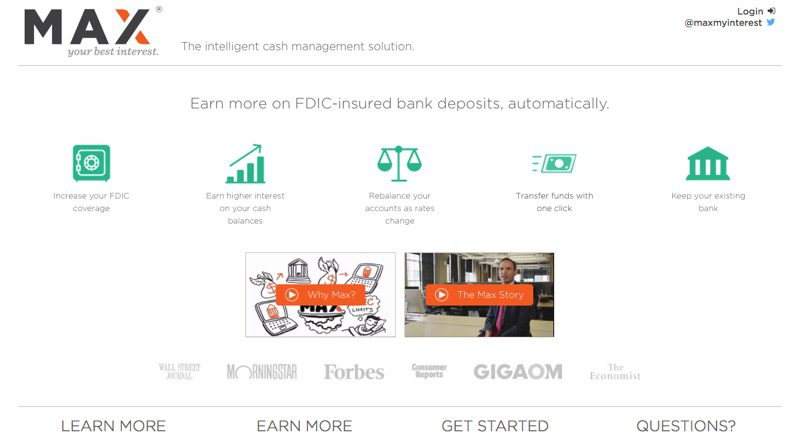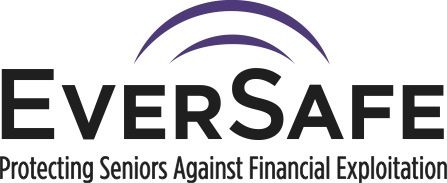The Finovate Debuts series introduces new Finovate alums. At FinovateFall 2014, Howard L. Tischler and Elizabeth Loewy demonstrated EverSafe, technology that helps seniors and their caretakers fight financial elder abuse.
EverSafe
EverSafe’s technology is a proactive defense network that helps older Americans defend themselves against financial fraud. The software reviews financial transactions and credit report activity on a daily basis. Alerts are sent in the event of suspicious activity, such as unexpected patterns in spending, deposits, or withdrawals.
The Stats
- Founded in January 2012
- Headquartered in Columbia, Maryland
- Funding raised: $1.5 million
- Total employees: 7
- Product launched: Spring 2014 (soft launch)
- Howard L. Tischler is Founder and CEO
The Story
- 10,000 Americans turn 65 every day
- 20% of Americans over 65 are financially exploited
- Seniors lose more than $2.9 billion a year to financial exploitation
- At least $18 trillion at risk (the net worth of Americans 65 and over)
These are the numbers that drive the EverSafe story. Older Americans are particularly vulnerable to criminals who take advantage of new technologies to steal and commit fraud. Whether it is due to declining cognitive facilities, relative ignorance of technology, or both, seniors and their families can face a number of challenges when it comes to making sure financial accounts remain fraud-free.
Howard Tischler, founder and CEO of EverSafe knows these challenges first hand. In helping his mother, who was a victim of what is called “elder financial abuse,” he learned about the scope of the problem. He also realized that his background as a technology entrepreneur might go a long way toward helping solve it.
“I saw the devastating effect it had on my mother and my family and resolved to apply technology to help prevent this tragedy from happening to others,” Tischler said.
The idea of providing a solution directly to seniors and their caretakers was key for Elizabeth Loewy, who worked as the former chief of the Elder Abuse unit at the Manhattan District Attorney’s office, and is now SVP for Industry Relations with EverSafe. She noted that as a prosector, she was only able to try and help after the fact. “Finally we have a service that addresses the problem at the source,” she said.
Addressing the Finovate audience, Loewy told attendees that over the 20 years she spent battling this phenomenon, she realized that the victims varied. Some had cognitive difficulties, like dementia, and some were certainly wealthier than others. “But these seniors all had one thing in common,” she pointed out. “These seniors had worked hard investing and saving in an effort to ensure that the fruits of their labor would be put away safe and sound for their golden years, protected from exploiters.”
Equally painful were the conversations she had with adult children, caregivers, powers of attorney who were devastated that they hadn’t detected elder financial abuse that had occurred “under their watch.”
In this, the founding of EverSafe represents a coming together of law enforcement and technology in order to not just defend seniors against financial exploitation, but to empower older Americans and those caring for them, as well. “(EverSafe) allows seniors to live independently, which is what seniors want,” Tischler said.
The Solution
EverSafe can be thought of as a suspicious activity report (SAR) for consumers. Getting started on the platform is simple and straightforward. Set up an account by linking credit cards, savings, checking, money market, investing accounts and more. EverSafe links to more than 20,000 different types of account. Once the account is registered, the platform downloads the last 90 days worth of activity, and begins daily monitoring.
The technology scans linked accounts, using pattern recognition to ferret out instances of atypical and potentially suspicious behavior. “We’re analyzing whether someone is taking their money,” Tischler explained. “And notifying them immediately rather than waiting until the end of the month.”
When suspicious activity is detected, the platform sends out an alert to the designated contact person. Alerts can be modified and customized, for example to set spending limits or transactions at certain locations and merchants. Similarly, alerts and transactions can be customized and annotated for further reference.
The point is to bring activity to the attention of someone in a position to make a call. Some of the alerts will undoubtedly turn out to be unusual, but benign, transactions. But because most financial fraud “starts small and then escalates,” as Loewy explained, “early detection and monitoring is key.”
Basic service provides daily monitoring of up to five financial accounts and one credit bureau for $9.99 a month. EverSafe will soon offer a “Full Alert plan” that will provide monitoring of an unlimited number of financial accounts and all major credit bureaus. The Full Alert plan will be $24.99 a month. There is also a “limited time only” $4.99/month “introductory offer” that consists of account monitoring.
The Future
For now the task is obtaining broader adoption of the platform, which includes helping people understand the breadth of the problem and recognize that there is now a technology that is easy to use and dedicated specifically to stopping it. “Financial institutions and credit card companies have definitely gotten better at detecting suspicious activity,” Loewy said. “But they can’t catch it all.”
Asked what’s next for EverSafe, Tischler mentions wearables. He sees a compatib
ility between his platform and wearable technology, especially watches, which may be a better way to deliver alerts to some seniors or caregivers. He hinted at a prototype, although provided no specifics at this point.
And while today’s octogenarians may not be big smartphone users, those of tomorrow are likely to be. “Aging (baby) boomers are among the fastest growing users of technology,” Tischler said. While it is true that in many instances those actually using EverSafe on a daily basis are the grown children, seniors of the future may be better equipped to take the fight against financial elder abuse into their own hands.






 Rippleshot
Rippleshot 







